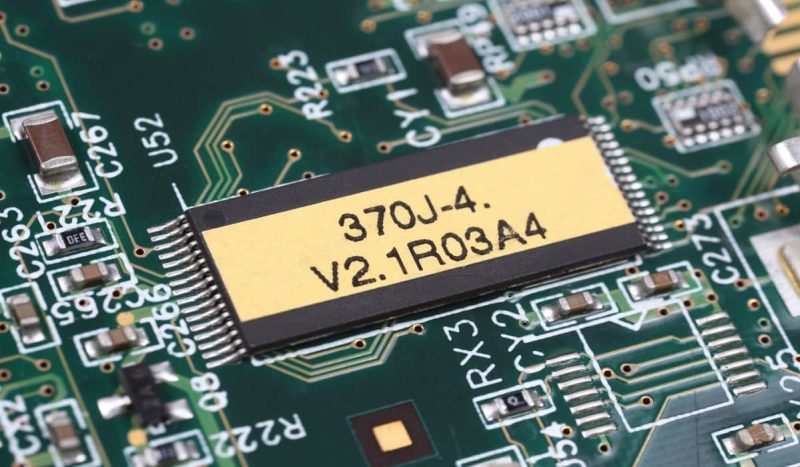Find out the key security risks of firmware security: Identify threats, and learn best practices and protection methods against modern hacker attacks.
Firmware is low-level software that builds the interaction between the hardware and the operating system. It contains important instructions for the operation of electronic devices such as routers, IoT sensors, smartphones, and even cars. However, these instructions are often invisible to the user, making firmware less secure. This article will reveal the principal risks of firmware security and best practices for protecting against hackers.
Key security risks in firmware development
Ensuring the safety of firmware systems is paramount. Firmware serves as the bridge between hardware and software, making it a prime target for malicious attacks. According to Lemberg Solutions, a firmware development firm, firmware vulnerabilities have seen a notable rise, with security researchers estimating a 7.5-fold increase compared to three years ago. This is a result of vulnerabilities introduced during coding, lack of encryption, inadequate authentication mechanisms, and insufficient security updates.
Handling these challenges early in development is crucial to protecting devices and preventing potential breaches. Nevertheless, firmware attacks come in many forms. Let’s have a look at a few of them:
- Firmware modification. Hackers modify a device’s firmware to introduce malicious code or “backdoors” which can cause significant damage.
- Firmware extraction. Hackers extract firmware from a device to analyze it for vulnerabilities. By reverse engineering the firmware, they can identify weaknesses and develop targeted exploits to compromise the device’s security.
- Remote update attacks. If hackers manage to intercept and manipulate updates, they can inject spyware or make unauthorized changes to the firmware, potentially compromising the entire system. For example, in the case of the Internet of Things (IoT), a device with poorly secured access can be compromised and used for DDoS attacks.
- Integration of unverified code. Using open or unverified code can introduce hidden vulnerabilities.
- Physical attacks. If a device is not physically secured, attackers can access its internal components through JTAG, UART, or other debug ports. For example, attackers can read the microcontroller memory through the JTAG interface and access sensitive data.
By understanding the methods hackers use, users can take steps to protect their devices, such as regularly updating firmware and implementing robust security practices. On the other hand, manufacturers should prioritize firmware security during the development process, conduct thorough testing, and implement strong security measures to reduce the risk of attacks or entrust security issues to a firmware development company.
Best practices for protecting firmware
By following a few simple steps, organizations can secure their devices’ firmware, making them more resistant to attack and less likely to be compromised. Let’s examine firmware security best practices.
Buffer and stack overflow protection
Buffer and stack overflow protection is vital for firmware security, preventing unauthorized access from data overrun vulnerabilities. Effective mechanisms, such as stack canaries and address space layout randomization, are essential for improving memory safety.
Firmware must integrate overflow protections from the design phase. Regular audits and testing are required to address buffer vulnerabilities promptly. By prioritizing these safeguards, organizations can enhance device security and protect user data against evolving cyber threats.
Capture security exceptions
To identify and address potential threats in firmware operations, we must secure exceptions, which involves logging incidents and anomalies to enable quick responses to risks. Exception-handling protocols ensure that deviations from normal operations trigger alerts for security teams. Organizations should establish clear guidelines for managing and reviewing security exceptions regularly to maintain operational integrity and prevent incidents.
Input validation
Input validation is a cornerstone in firmware security; by accepting only authorized data, organizations can effectively prevent unauthorized or malicious inputs that threaten to exploit system vulnerabilities. Validation protocols must be regularly updated to confront the ever-evolving landscape of security threats. Furthermore, investing in personnel training about the significance of input validation reinforces an organization’s commitment to safeguarding devices against cyber risks.
Secure boot mechanisms
Secure boot ensures that only trusted firmware and software run when a device starts. It uses cryptographic checks to confirm the firmware hasn’t been tampered with. If the software isn’t signed with a trusted key, it won’t load, blocking malicious code from sneaking in during startup. For example, your laptop only works with an official operating system signed by the manufacturer. If someone tries to install fake software or modify the boot process, the system refuses to start, keeping your device safe.
Secure firmware updates
Implementing firmware updates with cryptographic signatures is vital for ensuring their authenticity and integrity. It guarantees that only verified updates are applied, reducing the risk of malicious modifications.
Cryptographic signatures validate updated sources, preventing vulnerabilities from unverified patches. By incorporating cryptographic signatures, companies can shield their systems from counterfeit updates, ensuring that only legitimate enhancements are deployed.
Role of AI and machine learning in threat detection
AI and machine learning play a critical role in threat detection. They enable the creation of automated systems that quickly and accurately respond to modern challenges, such as malware, cyberattacks, and other threats. Let’s explore this in more detail:
- AI identifies unusual activities and anomalies in device behavior by analyzing network traffic, log files, and system interactions. For example, a system might monitor a company’s network traffic. If a device that typically transmits small amounts of data suddenly sends large data packets to an external server, the system flags this as an anomaly and blocks the transmission.
- Machine learning models can detect malware in code by identifying patterns that indicate malicious behavior. This is especially valuable for identifying new types of malware that traditional methods might miss.
- AI can use data from past attacks to forecast future threats. It analyzes attackers’ tactics, techniques, and procedures (TTPs) from previous incidents. For instance, a monitoring system might receive data about similar cyberattacks targeting companies within a specific industry. Based on this data, it could predict that your company might be the next target and recommend strengthening the security of particular systems.
- AI analyzes text messages and emails’ vocabulary, style, and domains to prevent phishing attacks. For example, it identifies suspicious phrasing, unusual sender domains, or inconsistencies in the email’s language that may indicate a phishing attempt.
This proactive and intelligent approach demonstrates the growing importance of AI in enhancing cybersecurity and mitigating evolving threats.
Ensuring compliance and standards in firmware security
Ensuring compliance and standards in firmware security is critical to protecting devices from vulnerabilities and threats. Below are key aspects of ensuring compliance and standards in firmware security.
| Aspect | Details |
| Adopting industry standards | NIST Guidelines (e.g., NIST SP 800-193) provide a framework for protecting firmware against unauthorized modification, detecting security breaches, and recovering to a secure state.ISO/IEC 27001 ensures information security management practices, including firmware integrity, aligns with globally accepted standards. Trusted platform module (TPM) for secure boot and firmware measurement to ensure integrity. |
| Secure Firmware development lifecycle (FDLC) | NIST Guidelines (e.g., NIST SP 800-193) provide a framework for protecting firmware against unauthorized modification, detecting security breaches, and recovering to a secure state.ISO/IEC 27001 ensures information security management practices, including firmware integrity, aligns with globally accepted standards. Trusted platform module (TPM) for secure boot and firmware measurement to ensure integrity. |
| Cryptographic protections | Threat modellingRegularly review firmware code for compliance with secure coding standards. Use tools to verify firmware binaries against secure policies. |
| Compliance audits and certifications | Third-party auditsCertifications like Common Criteria (CC) or FIPS 140-2 for assurance. |
| Supply chain security | Code signing. Ensures only authenticated and authorized firmware updates are installed.Encryption. Protects firmware data in transit and at rest. Secure Boot, validates firmware signatures during the boot process, preventing tampering. |
Future of firmware security
Due to technological advancements and evolving threats, the future of firmware security will be more dynamic and resilient. As artificial intelligence and machine learning become integrated into firmware, new attack vectors emerge that need addressing.
The rise of IoT and edge devices will demand standardized and scalable security frameworks. Enhanced global threat intelligence sharing and blockchain technology will improve defences against vulnerabilities. With a focus on secure, self-healing firmware and stricter regulations, organizations will emphasize security by design and education, making the firmware ecosystem safer and more privacy-oriented.
Image via PixaBay/Nanoslavic









